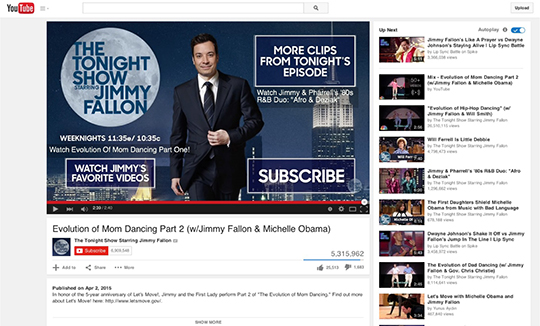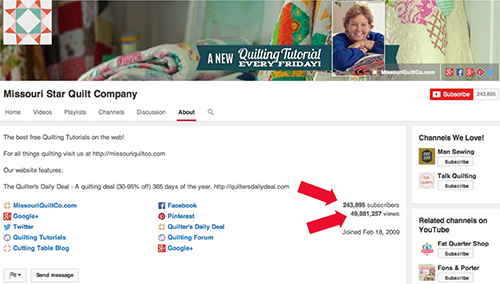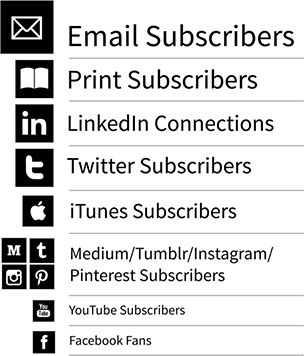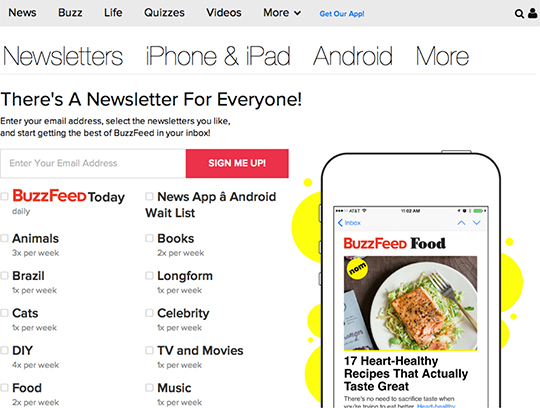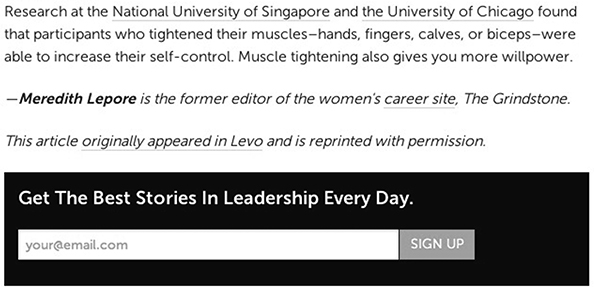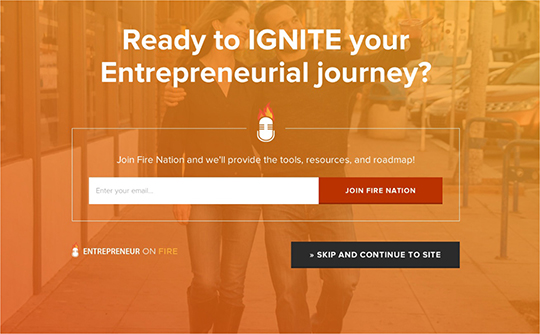Chapter 14
The Metric That Drives the Model
I made mistakes in drama. I thought drama was when actors cried. But drama is when the audience cries.
After Facebook’s IPO in 2012, the stock dipped by over 50 percent, down to less than $20 per share. Since then, Facebook’s value has more than quadrupled. The major reason, according to a Fast Company article, is a revision that Facebook made to its management and performance structure.
During the time Facebook’s stock was struggling, Facebook’s ad team had been responsible for revenue, while the product team was focused on user engagement. After months of lackluster results, and a clear lack of a unified team effort, Facebook decided to reward all its employees on their performance against a single metric: revenue. It was argued that “the enterprise would get a whole lot more ideas, and they would be better, more creative, more diverse.”
And boy, did this change work. In November of that year, App Ads came out, representing a true collaboration between the ad team and the product team. It was a game changer and added over $1 billion in revenue.
THERE WILL BE ONE TO RULE THEM ALL
One Ring to rule them all, One Ring to find them; One Ring to bring them all and in the darkness bind them.”
Like Facebook’s sole focus on revenue, your sole focus is on one simple metric—the subscriber. When you go to sleep at night, you should be thinking of attracting subscribers. When you wake up in the morning, you should have subscribers etched in your brain. The Content Inc. model only works if you can build a loyal audience of subscribers over time. Period.
As Andrew Davis states, “Focusing on creating a subscriber database is developing a customer database before you actually have customers to sell to.”
Like a subscription to Netflix or (in days past) a newspaper subscription, your goal is to deliver such amazing value through content that your audience is willing to give some piece of personal information up as a value exchange (e-mail address, home address, etc.). The only difference in your situation from the Netflix example is that you are giving your content away for free, so that you can monetize that relationship at a later point.
John Jantsch, founder of Duct Tape Marketing, followed a Content Inc. strategy, including a community blog effort and book series, to grow a multimillion-dollar consulting practice. But John’s lightbulb moment came when he added a “sign my guestbook” area to his website in the early 2000s. Instead of just looking at website traffic analytics, John was beginning to build a subscriber database. Those subscribers gave John the ability to launch his consulting network and build a multimillion- dollar platform in the process.
The Tonight Show host Jimmy Fallon is becoming one of the subscription kings of media. After every show, you’ll see multiple clips from the show (see Chapter 13 on repurposing) shared around social media to promote (you guessed it) subscriptions. After every short clip, you’ll see a humorous clip of Jimmy Fallon asking his audience to subscribe (Figure 14.1).
Figure 14.1 The new “king of late night,” Jimmy Fallon, focuses heavily on building digital subscribers.
The following are all the subscription options for The Tonight Show and NBC that are shown in the text area below each of Fallon’s videos on YouTube:
Subscribe NOW to The Tonight Show Starring Jimmy Fallon: http://bit.ly/1nwT1aN
Watch The Tonight Show Starring Jimmy Fallon Weeknights 11:35/10:35c
Get more Jimmy Fallon:
Follow Jimmy: http://Twitter.com/JimmyFallon
Like Jimmy: https://Facebook.com/JimmyFallon
Get more The Tonight Show Starring Jimmy Fallon:
Follow The Tonight Show: http://Twitter.com/FallonTonight
Like The Tonight Show: https://Facebook.com/FallonTonight
The Tonight Show Tumblr: http://fallontonight.tumblr.com/
NBC YouTube: http://bit.ly/1dM1qBH
Like NBC: http://Facebook.com/NBC
Follow NBC: http://Twitter.com/NBC
NBC Tumblr: http://nbctv.tumblr.com/
NBC Google+: https://plus.google.com/+NBC/posts
THE SUBSCRIBER IMPORTANCE HIERARCHY
As we discussed in Chapter 8, your goal is to build content assets where you have the maximum amount of control. This is especially true for the types of subscribers you attract. While I believe that any fan, follower, or subscriber can be a good thing, they are not equal in value.
For example, let’s say that you build your platform on Facebook. Over time, you’ve been able to attract 50,000 “fans” on that platform.
In November 2014, Facebook made some drastic changes to its platform to hide posts from pages, such as:
![]() Posts that solely push people to buy a product or install an app
Posts that solely push people to buy a product or install an app
![]() Posts that push people to enter promotions and sweepstakes with no real context
Posts that push people to enter promotions and sweepstakes with no real context
![]() Posts that reuse the exact same content from ads
Posts that reuse the exact same content from ads
While this makes sense for Facebook’s business model to work, at the same time it means that Facebook has the right not to show certain posts. Facebook expert Mari Smith recently stated that “bottom line, most Pages can no longer rely on organic reach to gain solid business results on Facebook. You need to have a consistent content strategy … to drive traffic to your website and build your email list via ads.”
I know some businesses that have seen organic reach on Facebook fall to 1 percent or less. At the same time, Scott Linabarger, former content marketing director at Cleveland Clinic, stated that some posts from the hospital saw up to 60 percent organic reach on Facebook. It really doesn’t matter though. You should leverage Facebook however you can, but you need to know that Facebook controls the ultimate reach, not you.
As you analyze your digital footprint and begin to build your audience, your focus needs to be at the top of this hierarchy (Figure 14.3). Simply put, it comes down to the amount of control you have over the connections.
Figure 14.3 All subscribers are not created equal. If you have a choice, e-mail subscribers are the most valuable ultimately because of control.
![]() E-mail. Most control and easiest access. Extremely helpful and relevant e-mails will break through the clutter.
E-mail. Most control and easiest access. Extremely helpful and relevant e-mails will break through the clutter.
![]() Print subscribers. Incredible amount of control. Communication never instantaneous and feedback difficult. Cost challenges due to print and postal charges.
Print subscribers. Incredible amount of control. Communication never instantaneous and feedback difficult. Cost challenges due to print and postal charges.
![]() LinkedIn connections. Full control over what you send to followers and connections, but channel is very congested, so it may be challenging to break through with a consistent message.
LinkedIn connections. Full control over what you send to followers and connections, but channel is very congested, so it may be challenging to break through with a consistent message.
![]() Twitter followers. Full control over what you send to followers but messages have an eight-second lifespan, so it may be challenging to reach audience regularly.
Twitter followers. Full control over what you send to followers but messages have an eight-second lifespan, so it may be challenging to reach audience regularly.
![]() iTunes subscribers. Full control over the delivery of audio content, but iTunes doesn’t give you access to who subscribes to your content.
iTunes subscribers. Full control over the delivery of audio content, but iTunes doesn’t give you access to who subscribes to your content.
![]() Medium/Tumblr/Instagram/Pinterest subscribers. Full control over delivery of content. Users will see your content if they choose to. No ultimate ownership over platform.
Medium/Tumblr/Instagram/Pinterest subscribers. Full control over delivery of content. Users will see your content if they choose to. No ultimate ownership over platform.
![]() YouTube subscribers. Some control over content, but YouTube can decide to hold some of your content back if subscribers aren’t engaging with your content (called “subscriber burn”).
YouTube subscribers. Some control over content, but YouTube can decide to hold some of your content back if subscribers aren’t engaging with your content (called “subscriber burn”).
![]() Facebook fans. Facebook continually modifies its algorithm, which is out of your control. Fans may or may not see your content depending on this algorithm, although quality, helpful, and interesting content has the best chance of breaking through. Promotional content almost always is shut down by Facebook.
Facebook fans. Facebook continually modifies its algorithm, which is out of your control. Fans may or may not see your content depending on this algorithm, although quality, helpful, and interesting content has the best chance of breaking through. Promotional content almost always is shut down by Facebook.
While you have more control with certain subscription options, Jeff Rohrs, chief marketing officer at Yext and author of Audience, is adamant that no company “owns” its audience: “The reason that the audience is in different places is that no audience is owned. Regardless of whether you’re a major television network, pop star, or professional sports team with rabid fans, you simply do not own your audience. They can get up and leave—mentally or physically—at any time.”
This is exactly the reason that amazingly helpful and relevant content is the only way to keep our audience connected to us, regardless of which subscription options you choose to leverage.
YOU NEED AN E-MAIL OFFERING
Regardless of whether you are a YouTube star or a pool guy, you need an e-mail offering to attract subscribers. BuzzFeed, the new media entertainment and news site, gained its popularity due to social sharing on Facebook and Twitter. While this is true, and Facebook and Twitter subscribers are important to BuzzFeed, every page on its site has a promotion to gain e-mail subscribers to its daily e-newsletter (Figure 14.4).
Figure 14.4 Even social media powerhouse BuzzFeed.com focuses on building e-mail subscribers.
As well, business publication Fast Company includes a nice little e-mail call to action at the bottom of every article (Figure 14.5).
Figure 14.5 At the end of every FastCompany.com article, there is a call-to-action for the company’s daily e-mail offering.
Let’s look at the Content Inc. example of EntrepreneurOnFire.com from John Lee Dumas. His main subscription channel is iTunes. This makes sense since John’s key platform comprises audio podcasts. But go to John’s website, and the first thing you’ll see is a call to action for an e-mail subscription (Figure 14.6).
Figure 14.6 EntrepreneurOnFire.com shows first-time visitors a full-display promotion to collect e-mail subscribers.
As you employ your Content Inc. strategy, you need some kind of e-mail offering. This could be a:
![]() Daily e-mail newsletter based on your original blog
Daily e-mail newsletter based on your original blog
![]() Daily e-mail newsletter curating the best information from the web
Daily e-mail newsletter curating the best information from the web
![]() Weekly e-mail newsletter or weekly report offering industry insight
Weekly e-mail newsletter or weekly report offering industry insight
![]() Report offering a fresh idea to your audience every month
Report offering a fresh idea to your audience every month
TIPS FOR GAINING SUBSCRIBERS
Think about the last time you clicked on an article on social media and it directed you back to the website. If it’s like most sites, the calls to action were all about the products. Perhaps a product demo? Maybe a new product offering?
With a Content Inc. model, every piece of content we send out drives to another piece of content that can be subscribed to (an e-mail offering). At CMI, our best subscription generator is a pop-over (sometimes called a “pop-up”) using a tool called Pippity (Figure 14.7).
Figure 14.7 Content Marketing Institute uses a software package called Pippity to show a pop-over to collect e-mail subscriptions.
In the past we served up the pop-over after 15 seconds or on the second page of a first-time user’s visit to the site. Recently, we changed this due to the following testing results; we now serve the pop-over when someone leaves the site. Here are the results of our test:
Standard Pop-Over
Dates served: 2/1–2/15
Impressions: 11,486
Conversions: 356
Conversion rate: 3.10%
Exit-Only Pop-Over
Dates served: 2/16–3/3
Impressions: 41,683
Conversions: 914
Conversion rate: 2.19%
Although the conversion percentage was lower on exit-only, we decided to keep it in place because of the additional conversions (over 100 percent growth in conversions). This is something you should test out yourself.
Other ways to enhance your subscription opportunities include:
![]() Ask for only an e-mail address, or just a name and e-mail address, for starters. Asking for too much information at first will damage your ability to gain subscribers.
Ask for only an e-mail address, or just a name and e-mail address, for starters. Asking for too much information at first will damage your ability to gain subscribers.
![]() Promote subscriptions on your website and social platforms.
Promote subscriptions on your website and social platforms.
![]() Place subscription options in the footer of your e-mail signature line. Do the same for all your employees.
Place subscription options in the footer of your e-mail signature line. Do the same for all your employees.
![]() Leverage SlideShare Pro, where you can upload PowerPoint-type presentations and collect e-mail names (subscriptions) when people download them. (Note: SlideShare is owned by LinkedIn.)
Leverage SlideShare Pro, where you can upload PowerPoint-type presentations and collect e-mail names (subscriptions) when people download them. (Note: SlideShare is owned by LinkedIn.)
CONTENT INC. INSIGHTS
![]() Without an audience, your Content Inc. strategy will not work.
Without an audience, your Content Inc. strategy will not work.
![]() While activity metrics are critical to measure the success of your content, your ultimate goal should always be to get or keep an audience. Laser-focusing on that makes all the difference.
While activity metrics are critical to measure the success of your content, your ultimate goal should always be to get or keep an audience. Laser-focusing on that makes all the difference.
![]() There are a number of ways to build an audience, but not all subscribers are created equal. If you have a choice, go for e-mail first.
There are a number of ways to build an audience, but not all subscribers are created equal. If you have a choice, go for e-mail first.
![]() Web traffic and social media shares are great, but if you are not building an audience, those may be meaningless metrics. Focus on the metrics that help you build an opt-in audience.
Web traffic and social media shares are great, but if you are not building an audience, those may be meaningless metrics. Focus on the metrics that help you build an opt-in audience.
Resources
Austin Carr, “Facebook’s Plan to Own Your Phone,” FastCompany.com, accessed April 28, 2015, http://www.fastcompany.com/3031237/facebook-everywhere.
Facebook for Business, “An Update to News Feed: What It Means for Business,” Facebook.com, accessed April 28, 2015, https://www.facebook.com/business/news/update-to-facebook-news-feed.
Mari Smith, Facebook status update, Facebook.com, January 3, 2015, https://www.facebook.com/marismith/posts/10152509018550009.
Jeffrey K. Rohrs, “The Proprietary Audience,” October 25, 2013, accessed April 28, 2015, http://www.exacttarget.com/blog/the-proprietary-audience-aka-no-audience-is-owned/.

